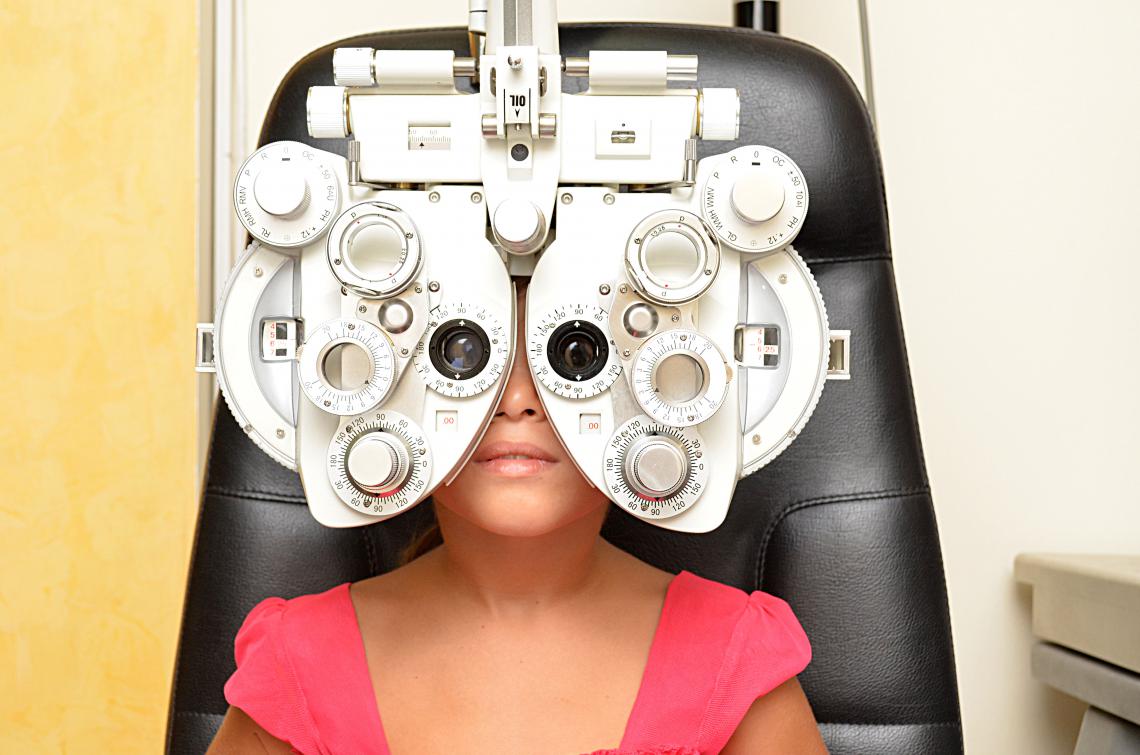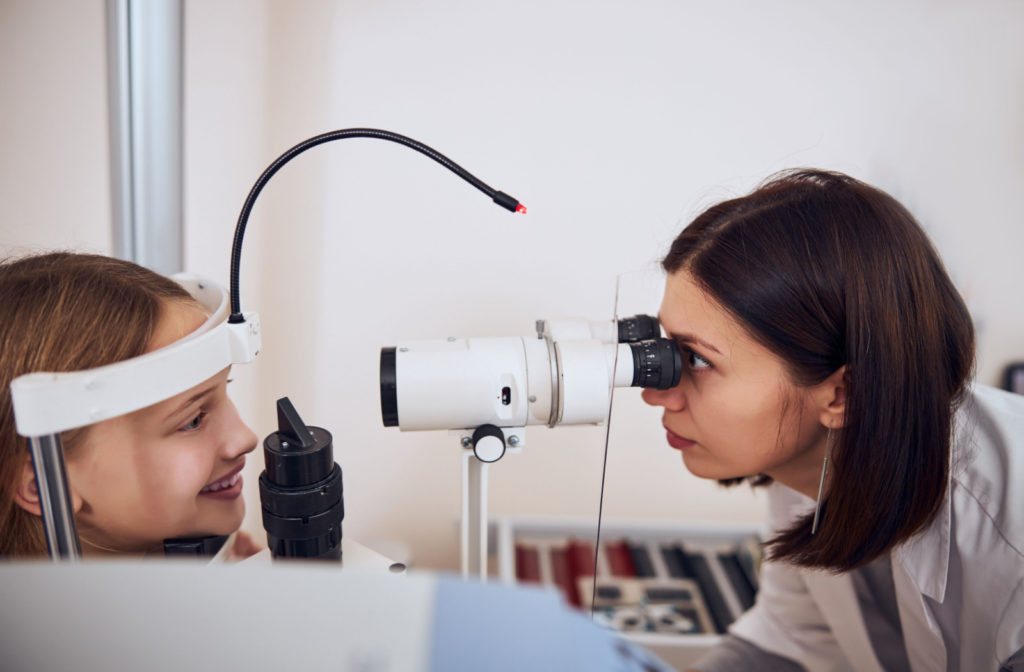Experience Personalized Care with Opticore Optometry in Chino
Checking Out the most up to date Technical Advancements in Optometry and What They Mean for Eye Doctors
In the ever-evolving field of optometry, current technical improvements are reshaping just how professionals approach eye care. From the accuracy of Optical Coherence Tomography to the nuanced understandings provided by AI-driven analysis tools, these innovations are establishing new criteria in individual assessment and treatment. Teleoptometry is positioned to redefine ease of access, guaranteeing that competence goes beyond geographical restrictions. As these improvements penetrate the practice, eye doctors are confronted with the challenge of accepting these devices to boost client end results. The concern stays: how will these technological changes redefine the roles and duties within the occupation?
Technologies in Diagnostic Equipment
Advancing the area of optometry, developments in diagnostic devices have reinvented the way eye treatment professionals analyze and identify visual impairments and eye problems. The previous decade has observed substantial technological advancements, allowing more exact and comprehensive analyses.
An additional secret technology is the intro of advanced corneal topography systems, which map the surface curvature of the cornea with precision. These tools are especially useful for suitable contact lenses and detecting corneal disorders. Digital retinal imaging has changed typical ophthalmoscopy, providing thorough, panoramic views of the retina that promote extensive visual exams.
The advancement of wavefront aberrometry has additionally been essential, enabling the analysis of refractive errors with unmatched precision (Optometrist Chino). This modern technology helps in personalizing rehabilitative lenses and improving surgical end results for refractive surgical procedures. Collectively, these diagnostic developments empower eye doctors to supply superior person treatment, making sure early treatment and tailored therapy methods, eventually improving visual health and wellness end results
AI in Individual Administration
Structure on the foundation of innovative analysis tools, the incorporation of fabricated knowledge (AI) in patient management stands for a transformative leap for optometry. AI systems are significantly employed to enhance effectiveness, accuracy, and personalization in client care. By examining large amounts of data, AI can identify patterns and forecast possible eye conditions, making it possible for eye doctors to customize interventions a lot more successfully. This capacity is crucial in managing persistent eye diseases such as glaucoma and diabetic retinopathy, where very early detection and continual tracking are crucial.
Moreover, AI-driven systems promote streamlined individual interactions and administrative procedures. Automated scheduling, online consultations, and customized follow-up plans not just improve person fulfillment yet likewise maximize time administration for experts. These systems can triage patients based on the urgency of their conditions, making sure that those in essential demand receive timely focus.
Moreover, AI enhances decision-making by giving eye doctors with evidence-based suggestions and therapy pathways. By incorporating data from electronic wellness records, AI tools provide understandings that inform medical choices, reducing the threat of mistakes and enhancing patient outcomes. As AI continues to evolve, its function in client administration will likely broaden, improving the landscape of optometric care.
Developments in Retinal Imaging
In the world of optometry, retinal imaging has witnessed impressive technological advancements that are boosting analysis abilities and patient care. Developments such as Optical Comprehensibility Tomography (OCT) and fundus photography have actually revolutionized how eye doctors examine the retina and visualize. OCT, particularly, offers high-resolution, cross-sectional photos of the retina, enabling the comprehensive examination of its layers. This ability is very useful for very early discovery and monitoring of conditions like glaucoma, diabetic person retinopathy, and age-related macular degeneration.
Enhanced imaging methods like OCT angiography are further refining analysis accuracy. Eye Doctor Optometrist. Such developments promote the recognition of minute retinal Get More Information changes that might symbolize condition development.
In addition, improvements in artificial knowledge are boosting retinal imaging by enabling automated analysis of large datasets. These systems aid eye doctors in determining patterns a sign of pathology, thus boosting analysis precision and efficiency. Collectively, these advancements are transforming retinal imaging into a cornerstone of modern-day eye treatment, improving end results and broadening therapeutic possibilities.
Teleoptometry's Expanding Function
Teleoptometry is increasingly ending up being an essential part of eye care, driven by developments in electronic interaction and analysis tools. This is especially useful in country and underserved locations where access to specialized eye treatment is often minimal.
The assimilation of fabricated knowledge (AI) further boosts teleoptometry, making it possible for the analysis of visual information and helping in the discovery of eye conditions such as glaucoma and diabetic person retinopathy. AI-powered algorithms can swiftly interpret intricate imaging information, providing eye doctors with valuable insights that reinforce medical decision-making.
Furthermore, teleoptometry supports continuity of care via smooth assimilation with electronic wellness documents (EHRs), enabling optometrists to preserve detailed individual backgrounds. When seeking advice from with various specialists., this makes certain that individuals get personalized and consistent treatment even.
In spite of these advantages, obstacles continue to be, consisting of making sure data safety and taking care of client expectations. Teleoptometry represents a considerable stride in the direction of even more accessible, efficient, and patient-centered eye treatment. As technology evolves, its duty is positioned to expand further.

Future Trends in Eye Treatment
A myriad of ingenious trends is readied to improve the future of eye care, driven by technological innovations and the developing requirements of patients. One considerable trend is the combination of man-made intelligence (AI) in diagnostics, which guarantees to improve the accuracy and effectiveness of eye evaluations. AI algorithms can assess substantial amounts of data from retinal pictures, potentially spotting conditions like diabetic person retinopathy and glaucoma earlier than standard techniques.
Moreover, personalized medication is acquiring grip in optometry, with hereditary testing informing tailored therapy strategies. This technique intends to enhance person outcomes by tailoring interventions to private hereditary profiles. index Wearable innovation, such as clever contact lenses, is likewise on the horizon, supplying real-time tracking of intraocular pressure or sugar levels, therefore providing continuous understandings into systemic and eye health and wellness.
The fostering of increased reality (AR) and virtual truth (VIRTUAL REALITY) in training and client education is one more emerging pattern. These technologies use immersive experiences that can enhance understanding and abilities both for eye doctors and people. As these patterns evolve, optometrists should remain abreast of technical advancements to provide cutting-edge care, making sure improved client end results and satisfaction in the vibrant landscape of eye treatment.
Conclusion

Jointly, these diagnostic innovations equip eye doctors to deliver exceptional person care, guaranteeing very early intervention and tailored treatment methods, eventually improving aesthetic health and wellness results.

As these innovations proceed to evolve, optometrists must adjust and incorporate them into technique, inevitably enhancing process effectiveness and boosting the criterion of eye treatment delivered to people.